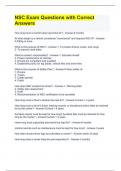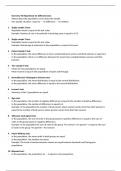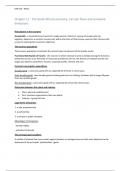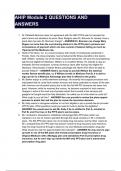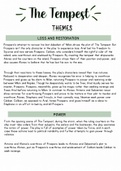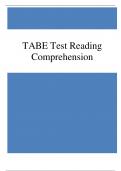QUANTUM MECHANICS
Introduction:
Failures of Classical Mechanics:
When the classical concepts were applied to the particles of atomic dimensions like electrons, they failed to
explain the actual behavior. Thus classical mechanical concepts cannot be applied to atomic phenomenon.
Example, motion of electrons in an atom.
Important points regarding drawbacks of classical mechanics:
a. The non-relativistic motion of atoms, electrons, protons etc.
b. The stability of atoms.
c. Origin of discrete spectra of atom.
d. The spectrum of blackbody radiation.
e. Variation of specific heat of metals and gases.
f. Failure to explain photo electric effect, Compton effect, Zeeman effect, Raman effect etc.
Wave – Particle duality of radiation:
The particle is specified by mass, velocity, momentum, and energy etc. a wave is spread out over a
relatively large region of space, it cannot be said to be located just here and there. Actually a wave is nothing but
rather a spread out disturbance. The wave is specified by its amplitude, wavelength, frequency, phase of wave
velocity, intensity etc.
Radiation includes visible light, infrared, ultraviolet, x-rays etc., behaves as waves in experiments based
on interference, diffraction etc. this is due to fact that these phenomenon require the presence of two waves at
the same position. Obviously, it is difficult for the two particles to occupy the same position at the same time.
Thus we conclude that radiation behaves like wave.
Planck’s quantum theory was successfully explained the blackbody radiation, photo electric effect,
Compton effect etc., and where the radiation interacts with matter in the form of photons or quanta. Thus we
conclude that radiation behaves like particle.
Thus sometimes radiation behaves as a wave and some time as a particle i.e., it has a wave-particle
dualism. It should be remembered that radiation cannot exhibits particle and wave properties simultaneously.
de-Broglie’s concept of matter waves:
According to de-Broglie’s hypothesis, a moving particle is associated with a wave which is known as de-
Broglie wave and the wavelength of matter wave is given by
λ = =
Where ‘m’ is the mass of material particle, v is its velocity and p is its momentum.
Consider the Planck’s theory of radiation of energy of a photon is given by
E=h = -------------------------- (1)
Where ‘c’ is velocity of light.
According to Einstein mass-energy relation E = mC2 ------------------------ (2)
Using equation (1) and (2) we get,
mC2 = λ= ------------------------------ (3)
where mC = P( momentum associated with photon.)
For a material particle of mass m and moving with velocity v, the wavelength associated with this
particle is given by
λ = = ----------- (4)
i) If ‘E’ is the kinetic energy of the material particle, then E = ½ mv2 2E = mv2
2mE = m2v2
2mE = p2
P=√
Padmasri Dr. B.V.Raju Institute of Technology, Narsapur, Medak District
, Engineering Physics Date:
deBroglie wavelength
λ = -------- (5)
√
ii) When a charged particle of charge q is accelerated by a potential difference V, then wavelength is
λ = -------- (6)
√
iii) When a material particle of is in thermal equilibrium at a temperature T, then E = kT
Where K = 1.38x10-23 J/K is Boltzmann’s constant
λ = ----- (7)
√
iv) deBroglie wavelength associated with electron:
let us consider the case of an electron of mass m and charge ‘e’ which is accelerated by a
potential V, then mv2 = eV where e = 1.6x10-19 C mass of electron, m = 1.9x10-31 kg
v=√
λ = =
√
λ = A0 --------- (8)
√
If V = 100 volts then λ = 1.226 A0
Properties of matter waves:
i) Lighter is the particle, greater is the wavelength associated with it.
ii) Smaller is the velocity of the particle, greater the wavelength associated with it.
iii) When v = 0 then λ = ∞, i.e., the wave becomes indeterminate and v = ∞ then λ = 0. This shows
that matter waves are generated by the motion of particles. This facts that matter waves are
not electromagnetic waves.
iv) The velocity of matter wave is greater than the velocity of light.
A particle in motion with associated matter wave has two different velocities: one referring to
mechanical motion of the particle represented by v and second related to the propagation of the
wave represented by w.
We know that E = h and E = mC2
= mC2/h
the wave velocity, w = x λ since λ =
w = (mC2/h)( )
w = C2/ v
w>C
As a particle velocity v cannot exceed the velocity of light.
v) The wave and particle aspects of moving bodies can never appear together in the same
experiment.
vi) The wave nature of matter introduces an uncertainty in the location of the position of the
particle because a wave cannot be said exactly at this point or exactly at that point.
Davisson and Germer’s electron diffraction experiment:
The first experimental evidence of matter wave was given by Davisson and Germer in 1927. They also
succeeded in measuring the de-Broglie wavelength associated with slow electron.
The experimental arrangement is shown in figure. The apparatus consists of an electron gun G where the
electrons are produced and obtained in a fine pencil of electron beam of known velocity.
The electron gun consists of a tungsten filament F heated to dull red so that the electrons are accelerated in
the electric field of known potential difference (V).
Padmasri Dr. B.V.Raju Institute of Technology, Narsapur, Medak District

